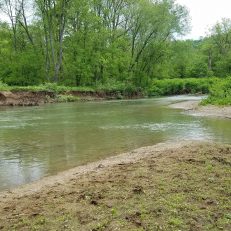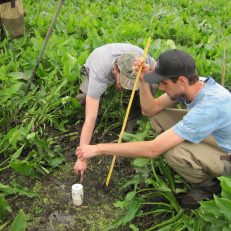Product Description
Join the ranks of informed environmental professionals with our “Endangered Species Act (ESA) Consultation Training” course, expertly designed for biologists, environmental consultants, regulatory agency personnel, and conservation advocates. This specialized online training delves into the procedural and substantive requirements of Section 7 consultation under the ESA, offering an in-depth understanding of interagency cooperation essential for protecting America’s most vulnerable species and their habitats. The course provides an endangered species act overview, ensuring participants gain a comprehensive understanding of the ESA, including its history, listing procedures, and the roles of relevant agencies.
Key Features:
- In-Depth Modules: Thorough course content covers the legal framework of the ESA, the steps of the consultation process, habitat conservation plans, and the roles of federal and non-federal entities.
- Practical Case Studies: Learn from an array of real-world scenarios and past consultations to grasp the nuances and complexities of the ESA process.
- Interactive Learning: Engage with interactive content, including simulations and decision-making trees that mimic the challenges faced during actual consultations.
- Expert Faculty: Gain knowledge from industry experts with firsthand experience in ESA consultation, providing insights into best practices and emerging trends.
- Networking Opportunities: Connect with professionals across the field, from government officials to environmental NGOs, fostering a robust learning community.
- Flexible Scheduling: Benefit from the self-paced structure, allowing for a learning experience that fits within the confines of a busy professional life.
- Professional Development: Earn continuing education credits that may be applied toward professional certifications or recertification requirements.
- Certificate of Proficiency: Upon course completion, receive a certificate demonstrating your competency in navigating the ESA consultation process.
Learning Outcomes:
Participants will:
- Understand the legal and regulatory underpinnings of the Endangered Species Act and the consultation process.
- Develop the skills necessary to facilitate effective Section 7 consultations, including initiating and concluding consultations, and addressing critical habitat considerations.
- Be able to identify potential project impacts on listed species and devise appropriate mitigation strategies.
- Gain proficiency in the use of tools and resources available for consultation, such as species lists, critical habitat maps, and impact analysis methodologies.
Who This Course Is For:
This course is intended for professionals engaged in projects that may affect endangered or threatened species, including government agency staff, environmental consultants, land developers, transportation planners, and wildlife biologists. It is also valuable for policy makers, legal professionals, and conservation organization members who need a thorough understanding of the ESA consultation process.
Enroll in the “Endangered Species Act Consultation Training” course today and ensure your projects are compliant, conservation-minded, and contribute to the recovery of endangered species and the ecosystems on which they depend. Your newly acquired expertise will not only enhance your professional capabilities but also support the vital work of species preservation.
Course format: This program is a blend of online presentations, discussions, assignments and tests.
The student will need to identify a local site to use for field assignment purposes.
Course schedule: The class is presented in a topics format and will be available for a total of 16 weeks. Students can work at their own pace to complete the courses. There is no specific daily or weekly schedule when students can work on the class. This class is offered entirely online as a virtual classroom experience. However, this is an instructor lead class and our instructors stand ready to help you with any questions or clarifications you may have.
Time commitments: The student should plan on about 8 hours of dedication to the class. There is no field data collection required for this class.
Overview of the Endangered Species Act
The Endangered Species Act (ESA) is a cornerstone of wildlife conservation in the United States, enacted in 1973 to protect and recover imperiled species and the ecosystems upon which they depend. Administered by the U.S. Fish and Wildlife Service (USFWS) and the National Marine Fisheries Service (NMFS), the ESA aims to prevent the extinction of threatened and endangered species, promote the recovery of these species, and conserve the habitats critical to their survival. The ESA also addresses species identified as candidate species, which are those under consideration for official listing and require proactive conservation efforts. The ESA’s three primary goals are to protect and recover listed species, conserve the ecosystems they rely on, and ensure that conservation decisions are based on sound science. This comprehensive approach has made the ESA a powerful tool in the fight against biodiversity loss.
ESA Consultation Process
The ESA consultation process is a vital mechanism that ensures federal actions do not jeopardize the survival of listed species or destroy their designated critical habitats. Federal agencies must consult with the USFWS and NMFS before proceeding with any project that may affect endangered or threatened species. This includes projects that may impact designated critical habitat, which are specific areas identified as essential for the conservation of listed species. This process begins with the development of a biological assessment, which evaluates the potential impacts of the proposed project on listed species and their habitats. Based on this assessment, the USFWS and NMFS determine whether the project is likely to jeopardize the species or adversely modify its critical habitat. If adverse impacts are anticipated, the agencies may require the implementation of reasonable and prudent measures to minimize harm, ensuring that conservation and development can coexist.
Section 7 Consultation
Section 7 consultation is a cornerstone of the Endangered Species Act (ESA), mandating federal agencies to engage with the U.S. Fish and Wildlife Service (USFWS) and the National Marine Fisheries Service (NMFS) before undertaking actions that might impact listed species or their designated critical habitats. This process is crucial for ensuring that federal activities do not jeopardize the survival of endangered and threatened species or lead to the destruction or adverse modification of their critical habitats.
The Section 7 consultation process involves several key steps:
- Initiation of Consultation: The federal agency proposing the action initiates the consultation by submitting a request to the USFWS or NMFS.
- Biological Assessment: The federal agency prepares a biological assessment to evaluate the potential impacts of the proposed action on listed species and their critical habitats.
- Consultation: The USFWS or NMFS reviews the biological assessment and provides comments and recommendations to the federal agency.
- Reasonable and Prudent Measures: The USFWS or NMFS may require the federal agency to implement reasonable and prudent measures to minimize the impacts of the proposed action on listed species and their critical habitats.
- Incidental Take Statement: If necessary, the USFWS or NMFS may issue an incidental take statement, which authorizes the taking of listed species under specific conditions.
This consultation process is an essential tool for aligning federal actions with the conservation objectives of the ESA. By requiring federal agencies to consult with the USFWS and NMFS, the ESA ensures that the protection and conservation of listed species and their critical habitats are prioritized in federal decision-making.
Programmatic Consultations
Programmatic consultations offer a streamlined approach to ESA compliance for projects involving multiple actions or phases. These consultations involve the creation of a programmatic agreement between a federal agency and the USFWS or NMFS, outlining standardized procedures and protocols for assessing and mitigating impacts on listed species. This collaborative process is particularly beneficial for large-scale or long-term projects, such as transportation infrastructure or land development, as it reduces the time and cost associated with individual project consultations. By establishing a clear framework for ongoing consultation, programmatic agreements facilitate more efficient and effective conservation efforts.
Endangered Species Recovery Planning and Implementation
Recovery planning and implementation are essential components of the ESA, focusing on the long-term conservation and recovery of listed species. Recovery plans are developed by recovery teams, which include representatives from the USFWS, NMFS, and other stakeholders. These plans identify the specific threats facing a species and outline the conservation actions needed to address them, such as habitat restoration, species reintroduction, and other measures. The implementation of recovery plans involves coordinated efforts among federal agencies, state and local governments, and various stakeholders to ensure the successful recovery of endangered species. Through these collaborative efforts, the ESA aims to restore healthy populations of listed species and secure their habitats for future generations.






